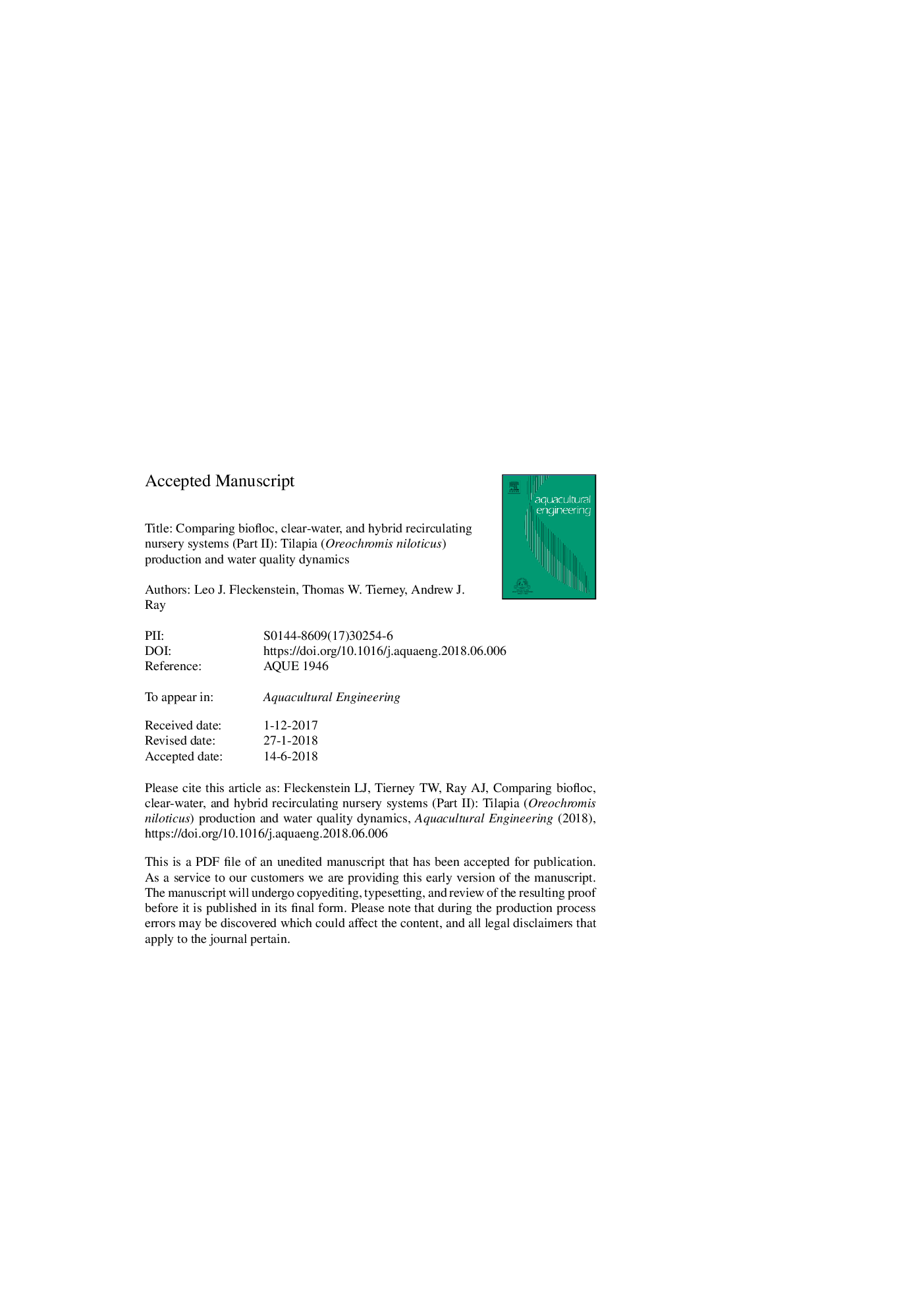| کد مقاله | کد نشریه | سال انتشار | مقاله انگلیسی | نسخه تمام متن |
|---|---|---|---|---|
| 8883497 | 1625690 | 2018 | 25 صفحه PDF | دانلود رایگان |
عنوان انگلیسی مقاله ISI
Comparing biofloc, clear-water, and hybrid recirculating nursery systems (Part II): Tilapia (Oreochromis niloticus) production and water quality dynamics
دانلود مقاله + سفارش ترجمه
دانلود مقاله ISI انگلیسی
رایگان برای ایرانیان
کلمات کلیدی
TSSparts per thousandMBBRBioflocClear-waterTANAPTRASNTUPPTVSs - VSSdissolved oxygen - اکسیژن محلولHybrid - ترکیبیRecirculating - تکرارTilapia - تیلاپیاMoving bed biofilm reactor - رآکتور بیوفیلم تخت حرکت می کندRecirculating aquaculture system - سیستم آبزی پروری در حال تکرار استhybrid system - سیستم ترکیبیVolatile suspended solids - مواد جامد معلق دائمیnephelometric turbidity units - واحدهای کدورت غیرفلومتریکSustainable - پایدارtotal ammonia nitrogen - کل نیتروژن آمونیاک
موضوعات مرتبط
علوم زیستی و بیوفناوری
علوم کشاورزی و بیولوژیک
علوم آبزیان
پیش نمایش صفحه اول مقاله

چکیده انگلیسی
Indoor, recirculating aquaculture systems (RAS) can be used to nurse tilapia fry in a biosecure environment to support a variety of production systems; however, it is not understood what type of RAS may be most appropriate for this task. Clear-water and biofloc systems have advantages and disadvantages; hybrid systems combining positive features of both could optimize animal performance and minimize production costs. In this study, four replicate 160-L tanks were randomly assigned to clear-water (CW), biofloc (BF), or hybrid (HY) treatments. CW tanks had a settling chamber, foam fractionator, and external biofilter containing biomedia. BF tanks only had a settling chamber, and HY tanks used a settling chamber and external biofilter. Tilapia (Oreochromis niloticus) were stocked at 55 per tank (305 fish/m3) at 0.17â¯g average weight. Total Ammonia Nitrogen (TAN) and nitrate were not significantly different between systems. Nitrite was significantly higher in BF compared to CW and HY systems during the last 4 weeks of the study. Turbidity was significantly higher in BF systems versus other treatments. Tilapia in HY systems had significantly higher average weight and specific growth rate compared to BF. Tilapia in BF systems had significantly higher feed conversion ratios and significantly lower harvest biomass versus other treatments. Diminished performance in BF systems likely resulted from inferior water quality conditions. The results indicate that CW or HY systems may be a better choice for tilapia nurseries than chemoautotrophic BF systems due to the short term periods in which nurseries operate and the volitility of nitrification in biofloc systems.
ناشر
Database: Elsevier - ScienceDirect (ساینس دایرکت)
Journal: Aquacultural Engineering - Volume 82, August 2018, Pages 80-85
Journal: Aquacultural Engineering - Volume 82, August 2018, Pages 80-85
نویسندگان
Leo J. Fleckenstein, Thomas W. Tierney, Andrew J. Ray,